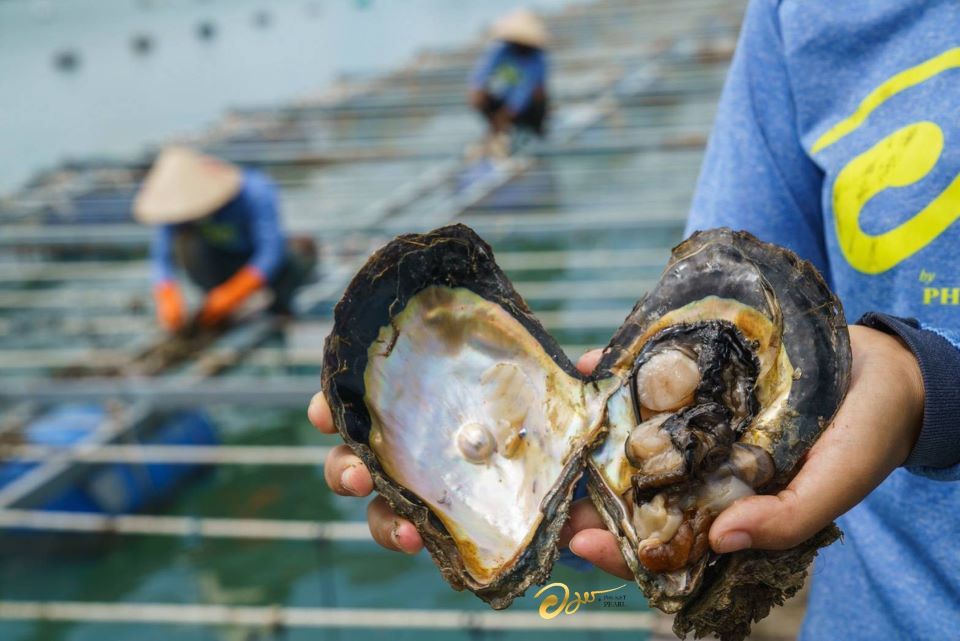
Many people think pearls are only white or cream-colored and only occur naturally. However, cultured pearls are farmed with saltwater pearl oysters and come in many different colors and three different types.
Natural pearls are highly valued and extremely rare. They are rarely sold on the open market. Once it was discovered why and how pearls were created naturally, cultured pearls became a growing market, and the variety and availability of pearls expanded around the world while the price of quality pearls dropped.
Researchers discovered that pearls were a covering over a piece of shell or a grain of sand that was irritating a section of the oyster called the mantle tissue. Pearl farmers found they could create a pearl by implanting a tiny piece of mantle tissue from a donor shell into the shell of a host oyster or freshwater mussel. This would cause the living mantle tissue to secrete layer after layer of calcium carbonate, which is what a pearl is made of.
Different Pearl Types and Colors
There are three types of saltwater pearl oysters used for pearl farming. These three different types of pearl oyster are responsible for the wide variety of colors in pearl grading. These oysters can also be bred in fresh or brackish water and produce freshwater pearls that were once known for their baroque, irregular shapes.
Akoya Cultured Pearls
The Akoya oyster is responsible for Akoya cultured pearls. These are the world’s most abundant saltwater pearl oysters, and the species has the longest history of being cultivated for pearl farming. They create a high-luster pearl of a uniform, rounded shape and even colors.
They generally produce smaller pearls of about 2 to 9 mm in diameter, whereas South Sea pearls are about 8 to 20 mm. Their small size and uniformity are prized by jewelers. The color ranges of Akoya pearls include white, pink, gold, gray and silver, with occasional shades of blue.
South Sea Cultured Pearls
The South Sea pearls are created by the Pinctada Maxima oyster in the southern waters of the South China Sea and the Andaman Ocean. They are also successfully farmed in Australia. South Sea Pearls are the most valuable type because they comprise only two per cent of the world’s pearl production. It also takes approximately three years for the pearls to mature. The third reason for their lasting value is the large size of pearls they can produce.
They are favored by jewelers looking for a large-size pearl with lustrous nacre. The main colors of these pearls are gold and white, with a large variety of colorful overtones.
Tahitian Cultured Pearls

The waters of the South Seas around Tahiti are home to some of the exotic and beautiful pearls in the world. These pearls are often described as rare black pearls, but on closer inspection, they reveal a wide spectrum of colors ranging from deep black to iridescent green to gray and white.
Because of the variety of colors, sorting these pearls into a single string of pearls is a challenging task that requires having thousands of pearls on hand. Tahitian pearls are considered one of the valuable cultivated pearls in the world.
Freshwater Cultured Pearls
Freshwater cultured pearls are the most abundant type of pearl on the market and are popular with buyers, jewelry designers and manufacturers. They have a tremendous range of shapes, sizes and colors and their lower prices make them an affordable option. They used to come in mainly irregular shapes, but producers have refined their techniques to create more classic rounded pearls.
They are cultivated in freshwater ponds and lakes or in estuarine brackish waters, and the species used to cultivate them can often be seeded with many pearls in a single oyster, making them cost-efficient for farming. Most of the world’s freshwater cultured pearls come from China.
Visit Amorn Phuket Pearl
The different types and colors of quality pearls in Phuket can be breathtaking for people new to the world of cultured pearls. Visit Amorn Phuket Pearl on your next visit to Phuket to see our elegant jewelry pieces for yourself. We also offer a tour of our pearl farming operation off the coast of Phuket, where you can take a longtail boat to see how pearls are farmed. Make your reservations to visit our pearl farm today.
